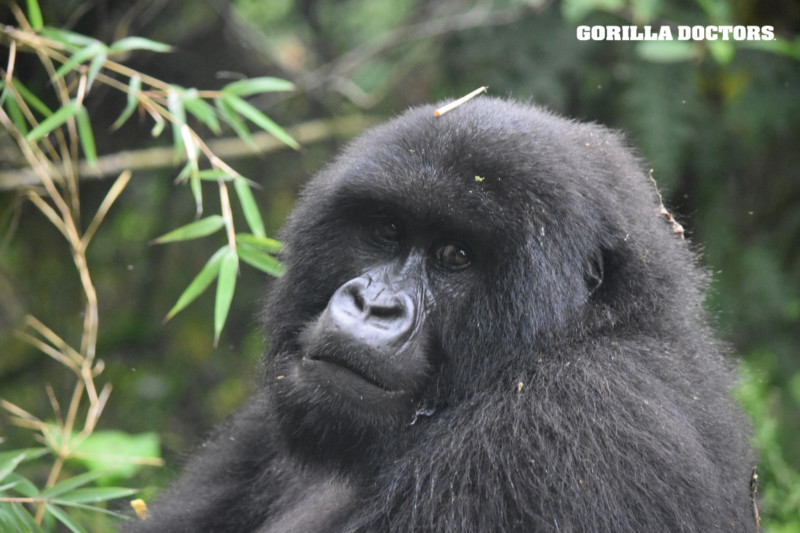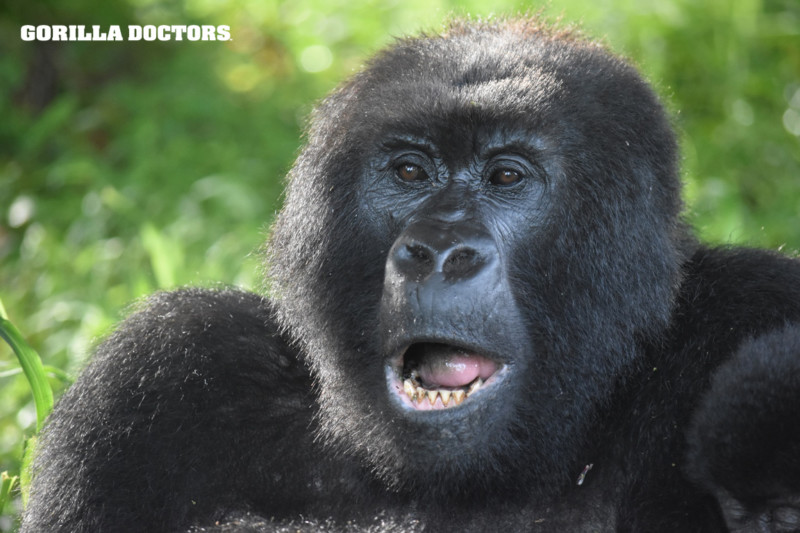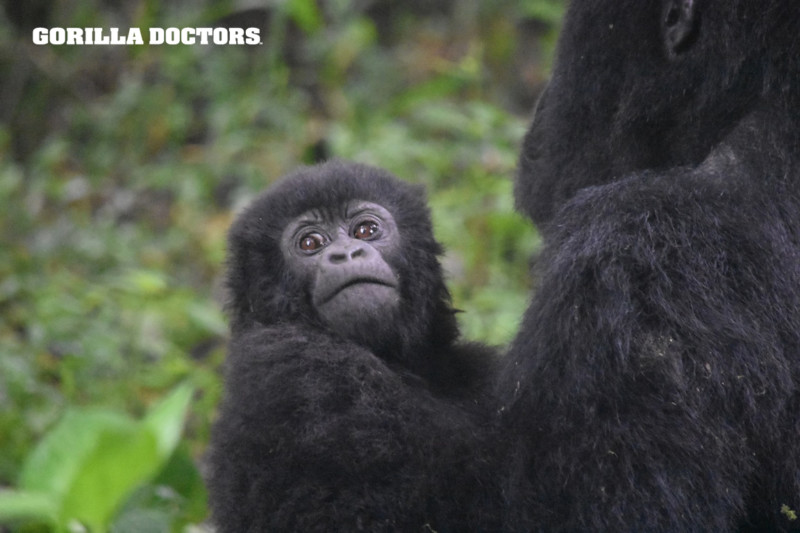Lightning Strikes Mountain Gorillas in Uganda
By Gorilla Doctors Staff on Friday, February 7th, 2020 in Blog.It is with great sadness we share this report with you. On Monday, February 3rd, Hirwa group in Mgahinga Gorilla National Park (Uganda) was struck by lightning during a severe storm, instantly killing four mountain gorillas in the group, including a pregnant female. Prior to the lightning strike, Hirwa group was comprised of 17 gorillas, led by silverback Munyinya. The strike killed three adult females, one of whom was pregnant, and one newborn infant.
An international response team, led by the Greater Virunga Transboundary Collaboration (GVTC), and including representatives from the Uganda Wildlife Authority (UWA), Rwanda Development Board (RDB), and senior personnel from the Mgahinga Gorilla, Volcanoes and Bwindi Impenetrable National Parks, and Gorilla Doctors, collaborated on the ground to investigate the site, assess the status and health of remaining gorillas in the group, and to conduct post-mortems of the deceased gorillas. As many of you know, Hirwa group was originally habituated in Volcanoes National Park, Rwanda and has lived there continuously, but in August 2019 it crossed to Mgahinga Gorilla National Park, Uganda, so the involvement of the Volcanoes National Park staff and their historical knowledge of Hirwa group was essential.
Mountain Gorillas Lost to Lightning Strike

Adult female, Gikundiro, was several months pregnant, so her unborn fetus also died. Photo taken January 26, 2020.

Adult Female Kabatwa. Kabatwa’s infant, Imbanzabigwi (male, born December 2018), survived the strike and was being carried by juveniles in the group. At 14-months-old, he was still breast-feeding but starting to feed on soft leaves. Photo taken December 16, 2019.

Adult female Mararo (pictured) and her one-month-old infant (born 1/1/2020) and not seen in photo. Photo taken January 26, 2020.
Field & Post-mortem Analyses
The lightning strike occurred mid-day on February 3rd when the group was resting and taking shelter from the storm. We have this detail because a Mgahinga Gorilla National Park tracker, was nearby and heard the cries of surviving group members and chest-beating of the silverbacks immediately following the strike. Upon observing the tragic outcome, the tracker immediately called UWA management, and word spread fast from there.
On February 4th, while multiple teams traveled to Mgahinga from Rwanda and across Uganda, rangers monitored the condition and movement of Hirwa group: while there was initially concern that some of the other gorillas were injured by the lightning strike, they appeared to be in general good health. On February 5th, the international team trekked into the forest to the scene of the lightning strike and further assessed the condition of the group. The 13 remaining gorillas were found approximately 200 meters from the strike location and were significantly calmer. They were observed resting, feeding, playing and grooming. Gorilla Doctors saw no visible signs of physical injury and newly orphaned infant, Imbanzabigwi, was seen with juveniles in the group. Imbanzabigwi is the one-year-old son of Kabatwa, killed in the strike. He will be closely monitored, as he was still breast-feeding while slowly transitioning to eating leaves.

14-month-old Imbanzabigwi, survived the strike, while his mother, Kabatwa did not. He was seen being carried by juveniles in the group. Photo taken January 26, 2020.
Gorilla Doctors Julius Nziza, Fred Nizeyimana and Ricky Okwir Okello, accompanied by RDB Dr. Richard Muvunyi, conducted post-mortems on each of the deceased gorillas. Based on physical evidence at the strike location and post-mortem findings, the preliminary cause of death was fatal electrocution resulting from the lightning strike. Gorilla Doctors and Mgahinga Gorilla National Park rangers will continue to closely monitor the health of the group over the next several days.
Long-term Impact
This tragic event comes at a challenging time for Hirwa group, which has been dealing with multiple health issues since the start of the new year: Gorilla Doctors has treated lead silverback Munyinya with multiple antibiotic injections for a respiratory infection; Imbaraga, a five-year-old juvenile, died from an acute intestinal obstruction; and newly orphaned infant, Imbanzabigwi, has been monitored for non-life-threatening lesions around his nose and mouth. Because of these health issues, Gorilla Doctors has been conducting monitoring visits of Hirwa group almost daily. The fact that a park ranger was nearby when the strike occurred is an extraordinary example of the challenges, and even the dangers, we sometimes face working in dynamic mountain environments. In fact, the ranger reported feeling a mild shock at the time of the strike!
This case, while extreme, also highlights the fragility of the endangered mountain gorilla population. While we know mountain gorilla numbers are increasing, the total population is still relatively small. Mountain gorillas are typically long-lived with slow reproductive cycles, so every single individual, and their lifetime reproductive potential, is critical to the long-term stability of the population. The loss of these three reproductively active females, one of whom was pregnant, and a newborn infant, is not only heart-breaking in the moment, but could ultimately have population-level consequences, making our veterinary work all the more critical for the gorillas that remain.


 Donate
Donate